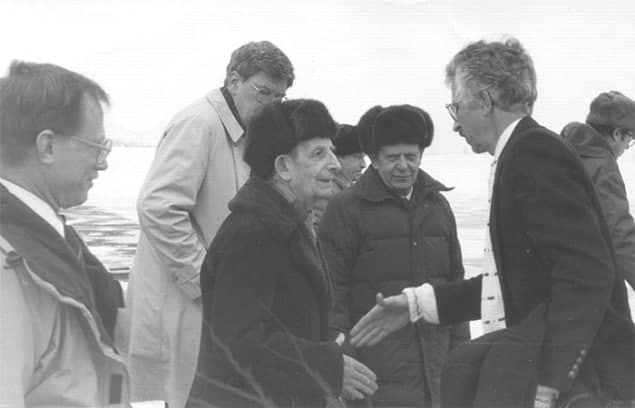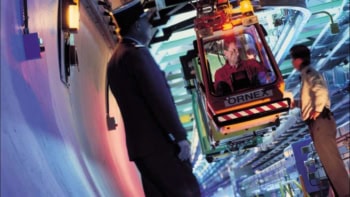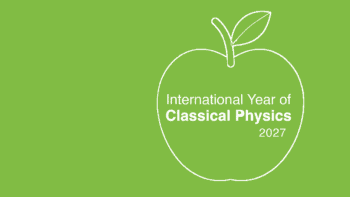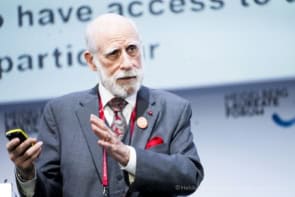Asif Siddiqi reviews Buried Glory: Portraits of Soviet Scientists by Istvan Hargittai

Although much has been written about the history of Soviet science, in the Western imagination the topic remains opaque, remote and (most importantly) hemmed in by a simplistic dichotomy of good versus evil. Beyond a few touchstones, such as the episode when Stalin’s fondness for the theories of Trofim Lysenko almost destroyed the burgeoning field of genetics, and the Soviet “theft” of the atomic bomb, most Western laypeople have few points of reference to Soviet science. In his emotionally resonant book Buried Glory, Istvan Hargittai, a well-known Hungarian chemist and prolific writer of popular books on science, adds depth to this picture by bringing to light the biographies of more than a dozen Soviet scientists.
Hargittai describes these men (and the scientists he has chosen are all men) as “heroes” – a word that suggests that his narrative will hew to the archetype of the noble scientist struggling against the oppression of the Soviet state. To his credit, however, Hargittai’s complex and often moving biographies of these scientists eschew a hagiographical approach. His stated goal for the book is to humanize the lives of “a select set of Soviet scientists”, and in this he succeeds. A more ambitious objective, to communicate “what it meant to be creating in science under Soviet conditions”, falters slightly, but only because Hargittai focuses on a few elites in lieu of the many thousands who undoubtedly experienced life differently from the famous personalities of this book.
The principal theme of the book – one that is implicit within the individual biographies, but never articulated as such – is the relationship between scientist and state. Through sequential chapters, each typically dedicated to a single person, Hargittai ably weaves together a longer narrative about the ways in which Soviet scientists negotiated their relationship with a repressive state apparatus. Many, including the condensed-matter physicist Peter Kapitza, resisted. Some, like Yulii Khariton, came to a rapprochement of sorts, while others avoided controversy at all costs (Yakov Zel’dovich, for example). As Hargittai shows, the latter approach was very difficult given the enormous importance the Bolsheviks placed on science as a tool of nation-building. To be a scientist, especially one with membership in the hallowed halls of the Academy of Sciences, was to be one of the chosen elite. But the benefits (and there were many material ones) of such an honour were often outweighed by the increased visibility it bestowed. As Hargittai notes, “there was no branch of science where scientists were immune to persecutions”, and this is true not only of the elites but also of several generations of mid-level scientists and engineers.
All of the men profiled here did their primary research in nuclear physics, low-temperature physics or chemistry. Some of their names will be familiar to physicists and chemists in the West: Kapitza, Lev Landau, Nikolai Semenov and Igor Tamm, for example. Most strikingly, almost all of them were involved with the Soviet atomic-bomb programme (and later with the development of thermonuclear weapons) in some way. Echoing the claim made in David Holloway’s magisterial Stalin and the Bomb (1994, Yale University Press), Hargittai shows that working on the bomb frequently insulated top physicists from persecution. Going further, he also demonstrates that this made it possible for them to engender limited forms of democratic activity, especially within the inner workings of the Academy of Sciences, suggesting that scientists were able to cultivate a modest “democratic” culture that was at odds with the larger imperatives of the Communist Party structure. This is not a new notion, however, as other historians of Soviet science (including Alexei Kojev-nikov, Ethan Pollock and Nikolai Krementsov) have also explored the spaces within which Soviet scientists operated and found surprising agency in particular cases, for example in promoting their own careers.
An important thread running through the narrative is one of identity. Many of the men who appear in the book were Jewish, exemplifying the proportionally large number of Russian Jews who were members of the post-revolutionary Intelligentsia, and especially the scientific and technical Intelligentsia. Scientists such as Zel’dovich, the main theoretical physicist behind the Soviet atomic-bomb project, and Khariton, a kind of counterpart to Robert Oppenheimer on the Soviet side, faced many hurdles because of their religious identity. Hargittai also highlights several instances where lesser lights faced severe discrimination as Jews, especially during the late Stalin years when Jewishness was identified with the “evils” of international “cosmopolitanism”. The conundrum, of course, is that many Jewish scientists and engineers (such as the space designer Boris Chertok, who the Russian press have recently been identifying as the “patriarch” of Soviet cosmonautics) remained in high positions throughout the Soviet times, making this part of Hargittai’s story more complicated than simply one of unbridled antisemitism. Soviet industrial managers were often quite willing to suspend their deep prejudices in the service of larger national goals, especially if these goals were related to security.
Perhaps the most well-known scientist in the volume is Andrei Sakharov, a leading light in the Soviet hydrogen-bomb programme who faced enormous adversity in maintaining his commitment to freedom from oppression. Much has been written about him, and Hargittai synthesizes this extant literature, ably reconstructing Sakharov’s evolution from devoted scientist to human-rights activist. Sakharov’s story is interesting not only because it highlights all of the contradictions of Soviet science – brilliant achievements despite (or perhaps because of) a draconian system – but also because his activities were a barometer for how other leading scientists saw their own place within the Soviet system. The infamous 1973 letter signed by 40 Soviet scientists denouncing Sakharov’s actions appears in Hargittai’s narrative as a polarizing milestone that pitted colleague against colleague. Among Westerners, Sakharov has often served as a kind of blank slate upon which to impose binary expectations of the lone hero versus all-encompassing evils of Communism, but historians of Soviet science have shown that such formulations are simplistic at best and misleading at worst. Echoing this earlier work, Hargittai’s book underscores that, despite their reservations about many of the ills of the Soviet regime, most of the scientists profiled here remained genuinely committed to its improvement, not its destruction.
Hargittai’s writing is leavened by a personal touch (he often knew the men in question) that makes Buried Glory eminently readable. The science is rendered in clear language, rarely obfuscated by jargon. The biographies are not simply chronologies of data but rather fully formed representations of the lives of these extraordinary men. There is a hint of tragedy about their lives, with incarcerations, disrupted family lives, “disappeared” relatives, dismissals, exiles and so on, but the tone is one of individuals driven to succeed and animated by the possibilities opened up by modern science. There is no definitive answer on the principal conundrum of whether Soviet science flourished despite the system or because of it, but Hargittai’s work is a worthy popular addition to the literature in English on this rather overlooked topic.
- 2013 Oxford University Press £22.99/$35.00hb 368pp



